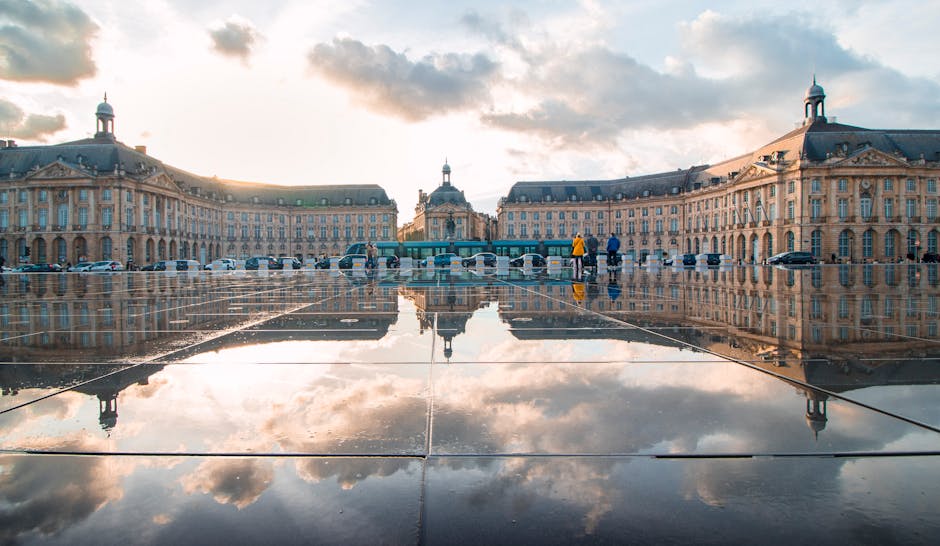The Place de la Bourse, located in the heart of Bordeaux, France, stands as a testament to the city’s rich history and its evolution as a center of commerce and finance. This iconic square, with its magnificent neoclassical architecture and prominent location along the Garonne River, has played a pivotal role in shaping Bordeaux’s identity and economic landscape for centuries.
The origins of Place de la Bourse can be traced back to the early 18th century when King Louis XV commissioned its construction as part of a grand urban renewal project. The square was designed to serve as a symbol of royal power and to modernize the medieval city of Bordeaux. Renowned architect Ange-Jacques Gabriel was entrusted with the task of creating this masterpiece, which would come to be known as Place Royale in its early years.
Construction of the square began in 1730 and continued for over two decades. Gabriel’s design featured a harmonious ensemble of elegant buildings surrounding an open space, with the centerpiece being the magnificent Palais de la Bourse. This palatial structure was intended to house the city’s stock exchange and serve as a hub for merchants and traders. The architecture of Place de la Bourse exemplified the neoclassical style, characterized by its symmetry, grandeur, and references to ancient Greek and Roman design elements.
As work on the square progressed, it became clear that Place de la Bourse would not only fulfill its intended purpose as a royal showcase but also serve as a vital economic center for Bordeaux. The city’s strategic location on the Garonne River had long made it an important port, and the new square provided a fitting backdrop for the bustling commercial activities that were the lifeblood of Bordeaux’s economy.
The French Revolution brought significant changes to the square, as it did to much of France. The royal symbolism was removed, and the name was changed from Place Royale to Place de la Liberté, reflecting the new republican ideals. However, the square’s importance as a commercial hub remained undiminished. In fact, its role in the city’s economic life only grew stronger in the years following the revolution.

